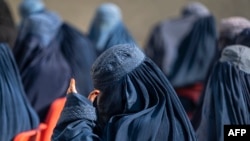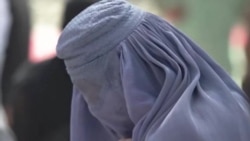On January 11, the United Nations Assistance Mission in Afghanistan (UNAMA) said the Taliban authorities in Afghanistan have been detaining and arresting women for noncompliance with the dress code rule, namely wearing the headscarf or hijab.
UNAMA said, it “fears the current crackdown is pushing women into even greater isolation due to fear of arbitrary arrest and creating a permissive environment for men to enforce repressive measures at home.”
UNAMA documented numerous cases of girls and women being detained across Afghanistan, some held incommunicado and others reportedly ill-treated, with the enforcement operations disproportionally affecting religious and ethnic minorities.
The operations to enforce the hijab mandate are carried out by the Taliban’s Ministry for the Propagation of Virtue and the Prevention of Vice, which the U.N. body described as the “de facto police.”
The Taliban denied any prosecution of women based on the hijab rule.
The Islamic Emirate of Afghanistan spokesman Zabihullah Mujahid claimed in a January 11 post on X:
“The concern of the UNAMA for women is incorrect. The concern of the UNAMA about the mistreatment of women in Afghanistan regarding their hijab, is incorrect. Afghan women wear hijab on their own, neither they have been forced to do so, nor the ministry of vice and virtue mistreated them. This is just propaganda and far from the reality.”
That is false.
The Taliban's Ministry for the Propagation of Virtue and Prevention of Vice spokesman Abdul Ghafar Farooq confirmed to The Associated Press that his agency’s female officers have been arresting women for violating the dress code.
In a voice memo sent to the AP on January 4, Farooq was unapologetic in admitting the arrests. “They violated Islamic values and rituals and encouraged society and other respected sisters to go for bad hijab,” he said. He warned that “in every province, those who go without hijab will be arrested.”
There are no statistics on the “bad hijab” arrests. And the Taliban is not sharing the data.
In his comment to the AP, Farooq said that only a “few limited women who spread bad hijab in Islamic society” have been arrested.
However, six days later, on January 10, Farooq told CBS News that some dozen women were arrested in the capital, Kabul, alone. He said the arrests continued for several days throughout the country and that most of the women were freed after their families paid the bail, but some were handed over to the judiciary “for further investigation.”
UNAMA said it had documented a “series of hijab enforcement campaigns” during which “large numbers” of women were arrested.
CBS News described the Taliban’s hijab enforcement operations as “mass arrests,” and photographs posted on social media showed trucks picking up women from the streets.
Moreover, Mujahid himself confirmed the arrests to CBS News but claimed the detentions lasted only a few hours and denied any mistreatment of the women.
Yet UNAMA said it is investigating reports of “ill-treatment and incommunicado detention.”
One family told CBS News that Taliban authorities had beaten their female relative while she was in custody and sent photographs showing bruises.
Some families said the morality police demanded large sums for the release of the women along with fathers’ and brothers’ signatures on a document saying that the woman would never again go on the street without a male chaperone or a hijab. Others said the Taliban authorities confiscated their homeownership documents.
The Taliban’s Ministry for the Propagation of Virtue and Prevention of Vice announced the dress code for women and girls in May 2022.
The decree mandated all women in Afghanistan to wear hijab, with the only acceptable “proper” dress covering the entire body except for the eyes.
The ministry’s decree also stated the consequences for a “woman caught without a hijab,” with the severity of punishment increasing from warning “her male guardian” to the imprisonment of the women who repeatedly violate the hijab rule.
A U.S. State Department spokesperson said Washington "remained concerned about the Taliban's repressive edicts against women and girls and its unwillingness to foster inclusive governance."
The United States Institute of Peace, a nonpartisan think tank funded by the U.S. Congress, has been chronicling the Taliban’s human rights violations since it seized power in Afghanistan in August 2021.
The graphic demonstrates the Taliban’s gradual reduction of women’s role in society – from education bans to occupational filters and growing dependency on male chaperones.







